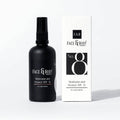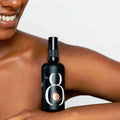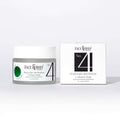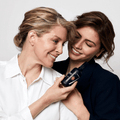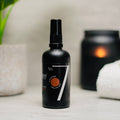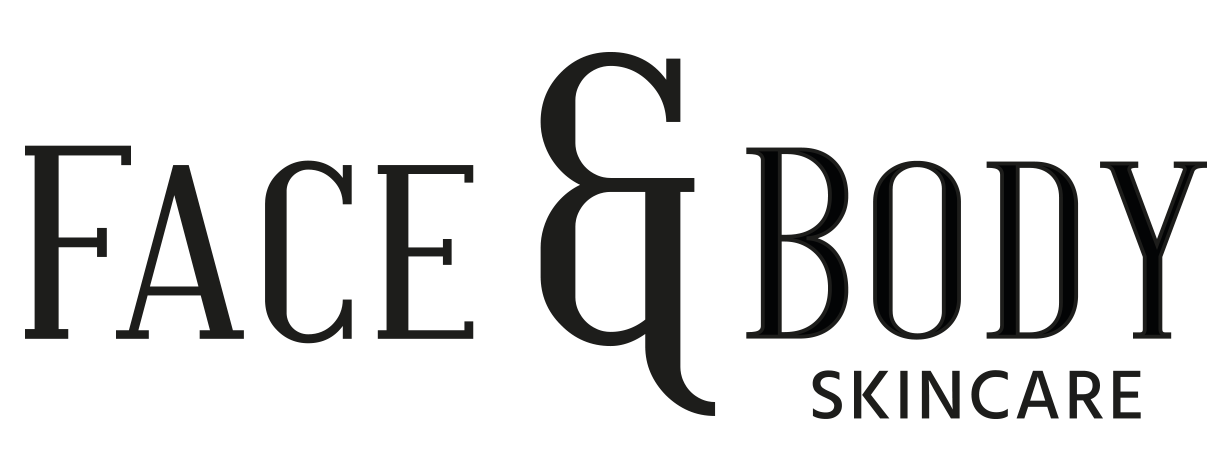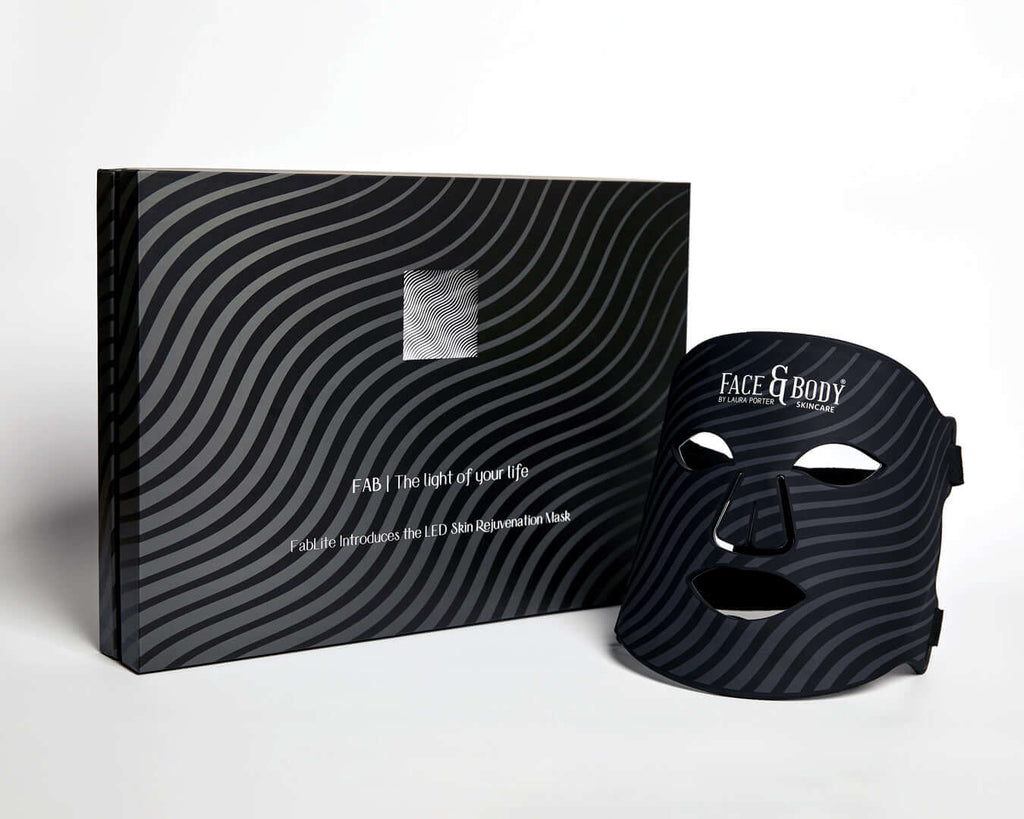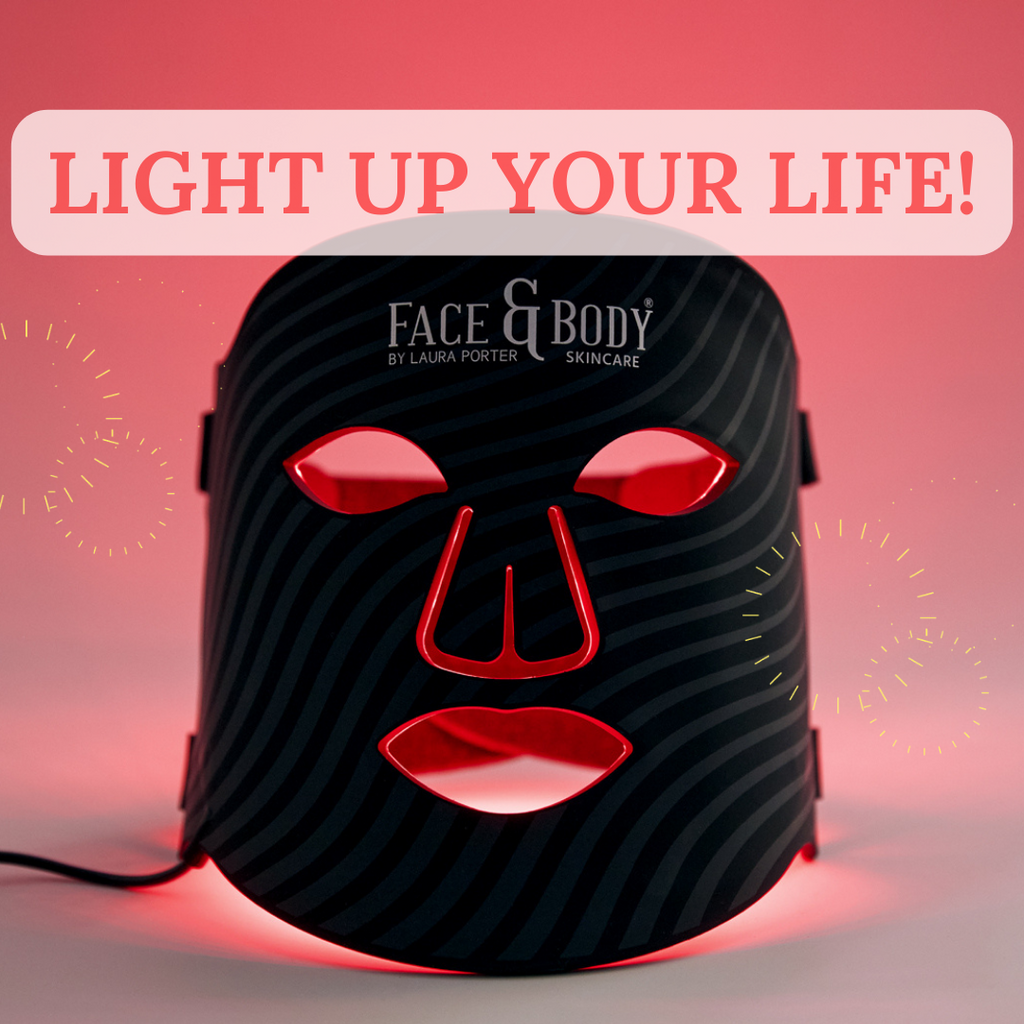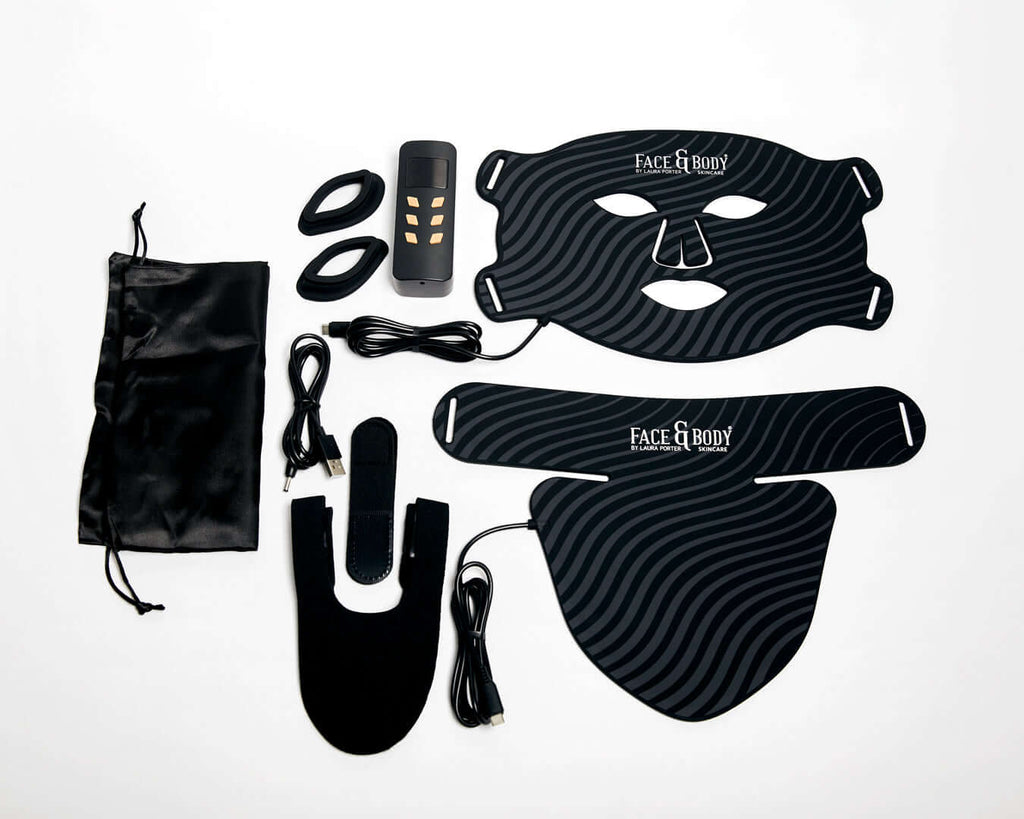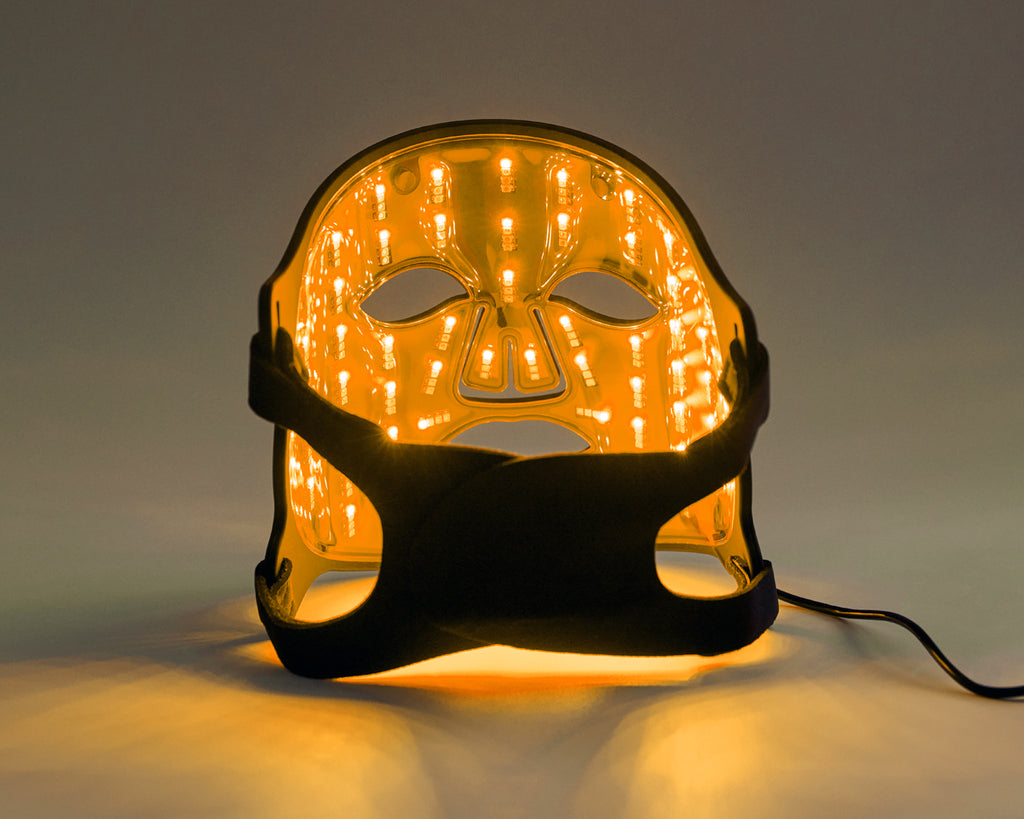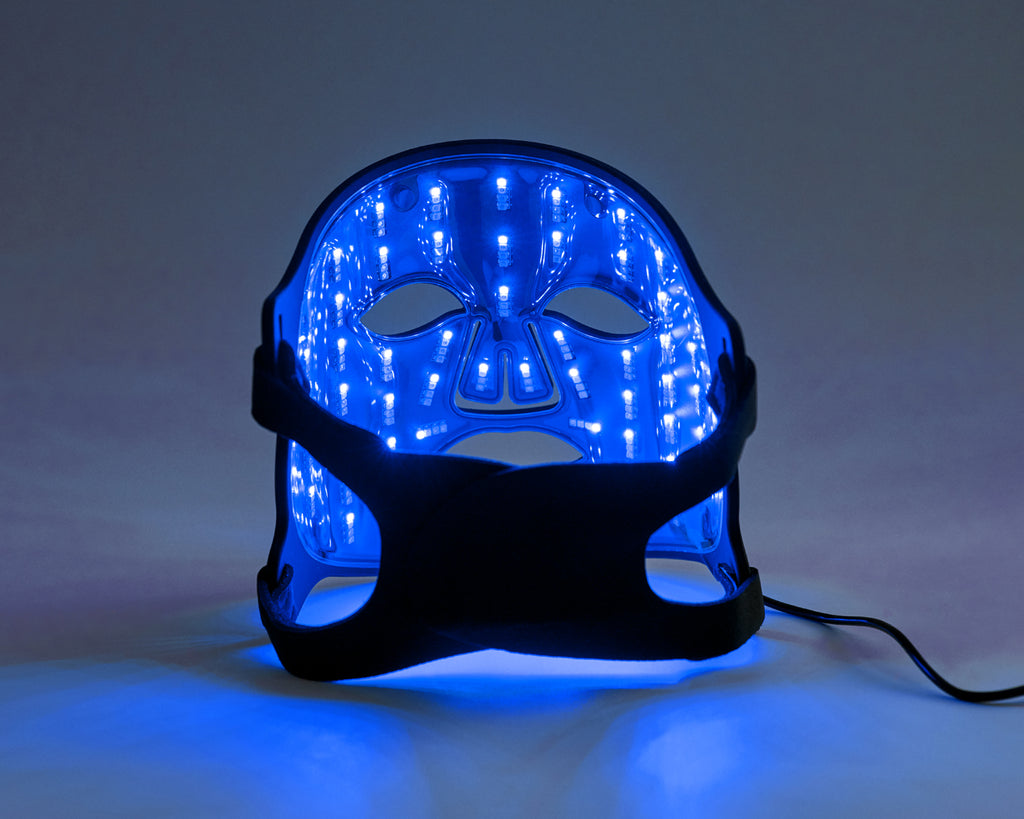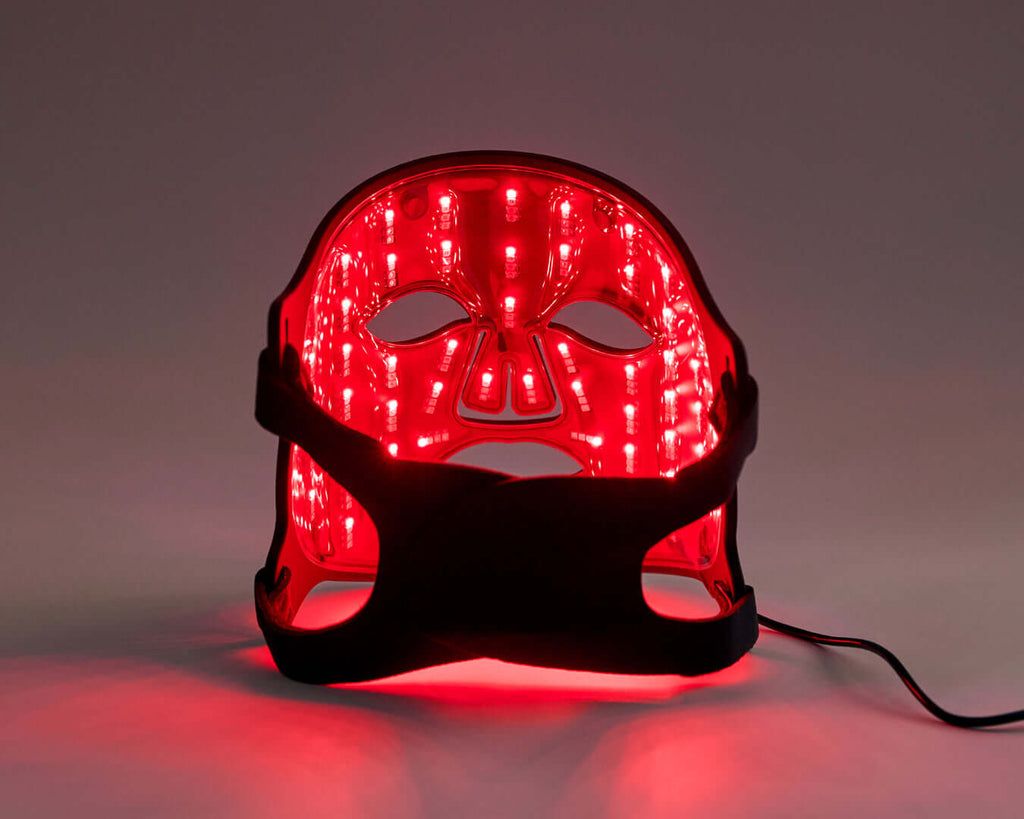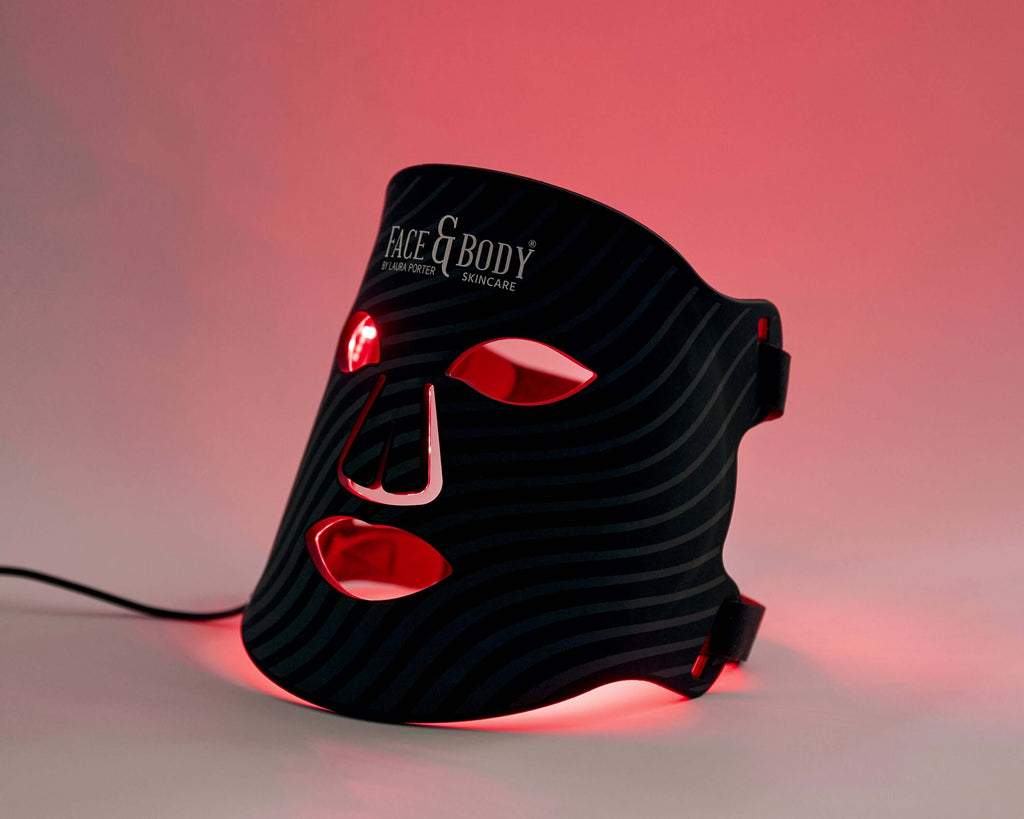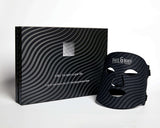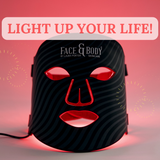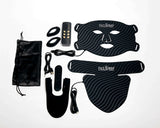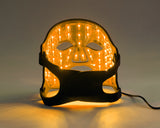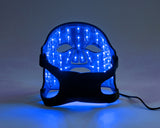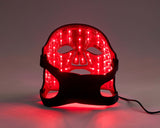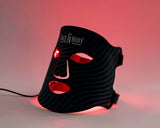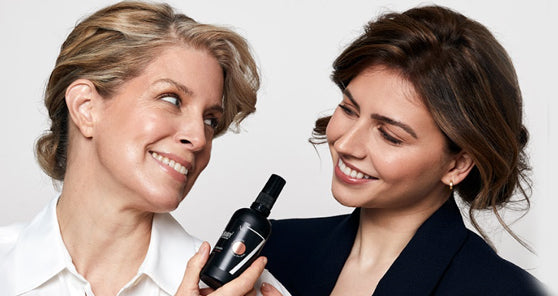LED Light Mask
Our LED light therapy mask is a non-invasive and painless treatment using different wavelengths of light to penetrate your skin and promote rejuvenation. An LED Skin Mask can be effective for various skin concerns when used appropriately, and tends to work for most skin types too.
It offers multiple benefits, particularly for those suffering acne, hyperpigmentation and redness. It can also help to reduce the appearance of wrinkles and fine lines, contributing to general skin rejuvenation and health.
The key to achieving noticeable results with LED light therapy is consistency!
Benefits of an LED Face Mask
The different lights within the therapy mask will provide different benefits, each noted below.
RED LIGHT: 630nm
- Helps reduce inflammation
- Stimulates collagen production
- Evens skin tone
- Smooths fine lines and wrinkles
BLUE LIGHT: 460nm
- Destroys acne-causing bacteria
- Helps prevent further breakouts
- Reduces inflammation and scars
- Reduces excessive oil
- Increases skin oxygen
YELLOW LIGHT: 590nm
- Penetrates deeper layers of skin
- Balances skin texture
- Helps reduce puffiness
- Improves lymphatic drainage
- Reduces redness
NEAR-INFRARED LIGHT : 850nm
- Targets the fibroblast, stimulating more collagen
- Reduces inflammation
- Starts the healing process
How to use our LED Light Treatment Mask
The key to achieving noticeable results with LED light therapy is consistency! Using your device regularly, most people will see improvements after just a few weeks of consistent use.
The duration of each at-home LED session can vary, but we’d recommend using the device for 10-20 minutes per session, and a few times each week.
Use it in conjunction with your usual skincare routine and treatments to further enhance its effectiveness. Consider it a well-deserved extension to your precious me-time!
While LED skin masks are generally safe and effective for many people, there are some contraindications and precautions to consider before using them. We advise consulting with a healthcare professional or dermatologist if you have any concerns or specific medical conditions.
- Mask
- Fasteners
- Remote control
- Cables and,
- a handy storage pouch.
